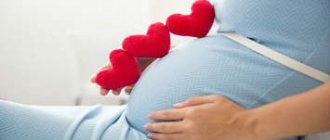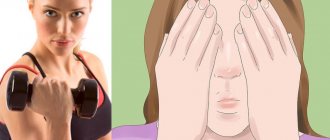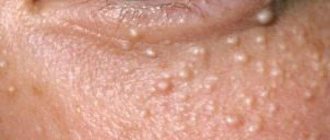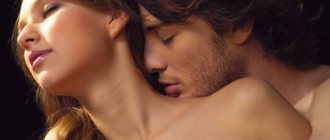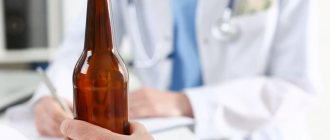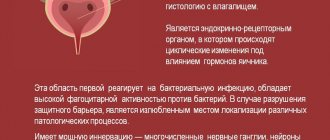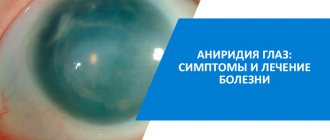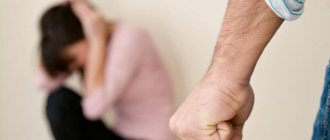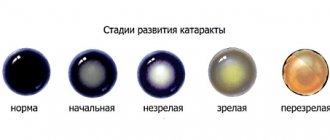Among the methods of influencing the human body, some practitioners mistakenly refer to alternative methods of therapy. Although in reality this is not the case. For example, modern reflexology is a very common method of treating a wide variety of diseases, but these are absolutely recognized by official medical methods of influencing biologically active points.
Compulsory licensing, higher medical education from doctors, vast experience in practical work - all these are the distinctive features of modern reflexology, and some of the developments have been adopted by physiotherapy. A properly selected impact program allows you to achieve amazing results. Blood flow is restored, the process of tissue regeneration is accelerated, the level of immune protection is significantly increased, and risk factors for the development of thrombosis and cardiovascular pathologies are prevented. With proper intervention, patients begin programs of self-healing and self-rejuvenation of the body due to its hidden reserves and capabilities.
- from alcoholism
- Reflexology of the facial and trigeminal nerve
The essence of reflexology: what it is and what it treats in medicine
Let's start the story with the fact that the essence of reflexology is to carefully influence biologically active points located literally throughout the human body. In total there are more than 800 (eight hundred). Many are located on the auricle, soles of the feet, legs, arms, back, etc.
In order to understand where reflexology is used and what it is in medicine, you need to know that the structure of the tissues of the human body is not homogeneous. All of them are penetrated by a fine network of blood vessels that provide nutrition and nerves. The intersection or accumulation of innervation paths forms unique biologically active points. If they are exposed to an impact precisely calculated in strength and duration, a signal will be sent to the brain structures. It will become an impulse to activate certain recovery mechanisms.
Doctors have known about what reflexology is and what it treats for a long time. But only relatively recently has the technique become available to a wide range of potential clients suffering from excruciating pain, serious illnesses, disorders of innervation and blood supply, bad habits and excess body weight.
According to the definition, the essence of reflexology is the ability to provide a targeted, dosed effect on strictly designated areas of the body, in the projection of which there is an accumulation or intersection of nerve fibers. Another name for the method is acupuncture. Acupuncture is one type of treatment. Other, less common ones are stone therapy (applying stones), pulsed electric shock, cauterization, bee stings (apireflexotherapy), hirudoreflexotherapy (combination with leech bites), etc.
A variety of needles, plant seeds, stones, natural poisons and irritants, extracts and essential oils, a laser beam, magnetic waves, and electric current discharges are used as instruments of influence.
↑ Contents
Indications for reflexology
Procedures for activating bioactive points have a wide variety of indications and can be used for diseases in various areas.
In particular, reflexology is indicated for people:
- suffering from diseases of the central and peripheral nervous system,
- as well as the autonomic system (vegetative dystonia, headaches, Raynaud's syndrome, etc.),
- musculoskeletal system (osteochondrosis, arthritis, arthrosis, etc.),
- cardiovascular system (hyper- and hypotension, varicose veins, etc.).
In addition, with the help of reflexology, the following can be successfully treated:
- respiratory tract diseases (bronchitis, tracheitis, bronchial asthma, etc.),
- digestive tract (gastritis, ulcers, colitis, etc.),
- genitourinary area (cystitis, cystalgia, sexual dysfunction, etc.)
Also, indications allowing the use of reflexology are available for:
- diseases of ENT specifics: sinusitis, otitis, hearing loss, sinusitis, pharyngitis, etc.).
Treatment of disruptions in the endocrine sphere, including metabolic disorders and hormonal balance, is also successfully carried out using the technique under consideration. It has a positive effect on the body in case of excess body weight, metabolic syndrome, diabetes, insulin resistance, menstrual irregularities, etc.
Among other things, reflexology is often used to treat various allergic reactions, as well as diseases of the skin and subcutaneous tissue. Systematic exposure to points of biological activity cures diseases such as dermatitis and dermatoses of various etymologies. Carrying out the described procedures helps to activate the human immune system, reduce the risk of viral infections, chronic fatigue syndrome and other similar unpleasant conditions.
History of reflexology
The history of reflexology goes back centuries. The first mention of the method of influencing biologically active points on the human body dates back to the beginning of the fifth century BC. A certain doctor named Zheng-Jiu is mentioned, who was fluent in this method. Further, in a documented form, references to this direction of manual influence from Western countries reached us. The sources date back to the seventeenth century.
This direction was formalized as a medical discipline only at the beginning of the nineteenth century. In 1913, Professor William Fitzgerald formulated the basics of reflexology with practical and theoretical justification for its application. Soon after this, the discipline was recognized by official medicine and gradually began to be introduced into the daily practice of doctors.
Today, many specialists use the scheme of this scientist, who structured data on the location of imaginary lines on the human body. They are guidelines in determining the location of biologically active points. When influencing them through acupuncture, pressing with a finger or applying a warm pebble, you can strengthen the protective functions of the body, improve the condition and performance of any internal organs and systems.
↑ Contents
Which doctor treats with reflexology?
In order to practice reflexology, a doctor must first obtain a higher medical education. Then he should, if possible, specialize in neurology. Knowledge of the anatomy of the human body and the pathways of innervation is mandatory for successful treatment.
Also, in order to use reflexology, a doctor must undergo training in a special course and an internship upon completion. Then examination testing is carried out. Upon successful completion of the course, the doctor receives a certificate giving him the right to treat patients using reflexology methods.
Which doctor treats with reflexology in a city clinic? In most municipal medical and preventive institutions, such specializations are absent due to a total shortage of personnel. Finding an experienced and competent reflexologist is very difficult. These doctors are literally worth their weight in gold. Therefore, when contacting a clinic that lists reflexology among its services, be sure to check all documents.
You must be provided upon request with:
- a license from a medical institution giving the right to provide treatment services using reflexology;
- a doctor's diploma from a higher educational institution;
- certificate of completion of specialization;
- specialist certificate with assignment to a certain category.
Practical experience can be judged by customer reviews and length of work experience. The more of both, the higher the chance of receiving quality service from a true professional.
↑ Contents
What does reflexology treatment provide?
All reflexology methods are aimed at restoring the normal state of the human body. Before starting reflexology treatment, the doctor conducts a diagnosis. It is necessary to identify the main pathological changes. Then the specialist compares the diagnosed diseases with innervation pathways and biologically active points located on their lines. This allows us to develop effective methods of influence.
What does such an effect have on the human body? Among the positive aspects of influence, the following factors are worth noting:
- the innervation process is normalized, which contributes to the activation of the functionality of the damaged internal organ and system;
- microcirculation improves in all tissues, which speeds up the recovery process;
- an impulse is received in the structures of the central nervous system, which triggers the process of activation of the body’s reserve forces;
- energy metabolism is restored both at the cellular level and at the level of the neural network of axons of the afferent and efferent group.
Patients experience significant improvement in their condition. Healthy sleep returns, a feeling of vivacity and energy appears, and the level of physical and mental performance increases. The pain syndrome is relieved already during the first session. After the procedure, the positive therapeutic effect can last up to 72 hours. After a full course of treatment developed by a specialist, the disease either enters the stage of long-term stable remission or goes away completely.
↑ Contents
Reflexology in pediatrics
The peculiarities of the impact of the considered method of treatment on the patient determine the specifics of the use of these procedures in pediatrics. First of all, the point is that whatever the indications, the painfulness of the effect during the session should be minimized, since such a factor can become an obstacle to full use in young patients. As noted above, laser acupuncture copes well with this task.
Treatment using the procedure for activating acupuncture points has one significant advantage - such therapy is completely hypoallergenic, which allows it to be used without problems in patients with problems in the field of allergy.
Indications and contraindications for the use of reflexology
The use of reflexology makes it possible to have a pronounced therapeutic effect on the human body. Normalizing the performance of all organs and systems allows you to improve health and restore mobility. There are indications and contraindications for reflexology, and we will consider them briefly, since only a doctor can provide accurate data during a face-to-face consultation.
In order to identify indications for reflexology or contraindications to the use of this method of influence, it is important to familiarize yourself with the patient’s medical history, his medical history, concomitant organic lesions of the central nervous system, vascular and musculoskeletal systems.
The main indications for reflexology include the following pathological conditions:
- damage to the structures of the nervous system, leading to the development of paresis and paralysis,
- bedwetting in children of primary and preschool age;
- delayed speech and mental development in children associated with various neuroses;
- hyperkinetic reactions of various types (blepharospasm, nervous tics, voluntary movements of the hands and feet);
- all types of vegetative-vascular dystonia in adolescents and adults;
- damage to the vascular wall and internal lumen (atherosclerotic plaques, arteritis, vasculitis, varicose veins and its consequences, obliterating endarteritis;
- damage to the endocrine system with the development of hyperthyroidism and hypothyroidism, type 1 and type 2 diabetes mellitus, disruption of the hypothalamus, etc.;
- manifestations of pathological menopause in women and men;
- destructive changes in bronchial and pulmonary tissue (pleurisy, bronchial asthma, bronchopneumonia, pneumosclerosis, etc.);
- cardiovascular diseases in the stage of stable remission;
- osteochondrosis of the spine and its consequences (protrusion of intervertebral discs, hernias, radiculitis, vertebral artery syndrome, etc.);
- instability of the position of the vertebral bodies;
- arthrosis of large joints of the lower and upper extremities;
- consequences of various types of traumatic exposure;
- disruption of the proper functioning of the digestive and urinary systems.
This is not a complete list of those pathologies for which different types of reflexology are indicated. But only the attending physician can more accurately determine the need for such treatment.
Reflexology shows excellent results when used in combination in the treatment of cerebral palsy, the consequences of acute cerebrovascular accident in aged and young patients, muscular dystonia and dystrophy, epilepsy and the consequences of tick-borne encephalitis.
However, it is worth considering existing contraindications for reflexology. They are divided into absolute and relative. Moreover, during the appointment, the doctor may decide that the procedure cannot be performed due to the patient’s current condition. Thus, the session will be canceled if the patient has an elevated body temperature and high blood pressure, if there is suppuration on the skin in the place where the effect will be applied.
The main types of contraindications for reflexology include the following conditions:
- acute bacterial and viral infections;
- exacerbation of chronic diseases, including those of infectious origin, such as tuberculosis or hepatitis;
- age up to 6 months and over 78 years;
- pathologies of the cardiovascular system in the acute period and during decompensation;
- body weight deficiency of more than 30% and cachexia;
- pregnancy.
It is necessary to take into account the specifics of the reflexology techniques used. If it is intended to use hirudotherapy or apitherapy, then it is important to exclude the presence of allergic reactions in the patient to these triggers. It is also important to understand that in case of chronic alcoholism, severe exhaustion of the body (for example, against the background of cancer intoxication), such types of treatment are not recommended due to the sharply weakened human energy system. In such patients, sessions will not bring visible positive results. First, it is important for them to correct the energy balance of the body.
↑ Contents
REFLEXOLOGY
Reflexology
(Latin reflexus turned back, reflected + Greek therapeia treatment) - a healing system based on reflex relationships formed in the process of phylo- and ontogenesis, implemented through the central nervous system through irritation of the receptor apparatus of the skin, mucous membranes and underlying tissues to influence functional systems of the body.
The concept of “reflexotherapy” appeared in France in 1912-1913. The term was proposed by H. Jaworski, who combined under this name various therapeutic techniques based on a reflex (see). The term “reflexotherapy” is currently widely used, but does not fully reflect the essence of a number of diagnostic, therapeutic and preventive methods included in it.
In our country, the term “reflexotherapy” combines all methods of reflex action (regardless of the method) on active areas of the body surface (points) rich in nerve elements.
Among doctors of various specialties, interest in reflexotherapy methods is constantly growing, ensuring the achievement of favorable results in the treatment of a significant number of diseases and syndromes without the use of drugs or with a reduction in their dosage. The absence of side effects with the qualified use of R. methods contributes to their wide recognition.
The mechanism of action of R. is based on reflex reactions of the nervous system—local, segmental, and suprasegmental. Excitation along the afferent pathways of the nervous system and along associative fibers is transmitted to various segments of the spinal cord, to the stem reticular structures (reticular formation, thalamus, hypothalamus), and the cerebral cortex. The cerebral cortex, as the main analyzing and regulatory center of the body, forms a response to reflex influences.
Violation of the regulatory functions of the nervous system causes mismatch in functional systems. Each link of a mismatched system, according to G.N. Krimanovsky (1980), can be a trigger for the construction of a new pathological functional system and changes in both the ratio and levels of functioning of the dominant, determinant and antisystems. “Pre-launch integration”, which develops under the influence of motivation and environment before the stimulus, as shown by P.K. Anokhin (1971), ensures the formation of a dominant, dominant focus of excitation (see Dominant). This focus is dominant, capable, in the words of A. A. Ukhtomsky (1927), of summing up excitation, while diffuse waves from stimulation of different modalities excite all centers that are currently sufficiently excitable. The artificially created dominant persists for a long time and leads to the extinction of pathological excitation associated with the disease.
The implementation of the reflexotherapeutic effect is achieved by the multimodal convergence of somatic and visceral signals on neurons at different levels of the nervous system (spinal cord, medulla oblongata, thalamus, cerebral cortex). Neurophysiological studies have shown that with the convergence of multimodal signals, somatic impulses predominate over visceral ones. The flow of impulses from the musculocutaneous nerves (from the skin), if it precedes the visceral impulses (from the internal organs). extinguishes the latter, therefore the bioelectric reaction in c. n. With. this does not occur, although a change in the general excitability of the nerve centers is noted. The same relationships are possible within the somatic nervous system between impulses along fast-conducting myelinated fibers, transmitting “instant” pain, and through slowly conducting non-myelinated nerve fibers, transmitting dull, aching pain; in this case, the impulse along the fast-conducting fibers blocks the input to the spinal cord neurons, and the response from subsequent stimuli along the slow-conducting fibers is “extinguished.”
The discovery of endogenous opiates (see Endogenous opiates) and opiate receptors of neurons contributed to the elucidation of the role of neurohumoral factors in the mechanism of action of reflexology. It turned out that the introduction of enkephalins and morphine into the region of the marginal zone and gelatinous substance of the spinal cord, containing neurons with opiate receptors activated by fast-conducting fibers, inhibits T-cells of the dorsal horn, excited by slow-conducting pain fibers.
An important role in the implementation of integrated reflexotherapeutic influences, according to modern times. data, belongs to the periaqueductal gray matter, raphe nuclei, dorsomedial nuclei of the hypothalamus, parafascicular complex of the thalamus, and cerebral cortex.
Depending on the location of impact, modern methods of reflexotherapy can be divided into the following groups: corporal and auricular, scalp (cranial), nasal (Bonnier centrotherapy), facial, vertebral (spondylotherapy), plantar and manual (pedo- and manotherapy). R.'s methods are also accepted depending on the treatment used. factors are divided into mechanical, thermal, pharmacological, light, electrical, magnetic and biological. Among the R. methods, in addition to the most common ones (see Acupuncture), microneedling therapy, vacuum therapy, applications of balls and plates, the finger method, microwave and magnetic methods, cryotherapy, laser therapy, and manipulative reflexology are being developed.
Microneedling has become widespread - a method of prolonged exposure to certain areas of the skin with special microneedles for the treatment of painful, allergic, hyperkinetic and many other pathols. conditions, as well as prevention of exacerbations of often recurrent diseases (radiculitis, neuralgia, bronchial asthma, etc.). Microneedles have a handle in the form of 1.5-2 turns of a spiral; a rod 10-14 mm long passes through the center of the cut; its working end is sharpened into a cone shape for insertion into tissue. After introducing microneedles into the skin, they are fixed with an adhesive tape and left for a long period (from several hours to 21 days). At the same time, microneedles have a mechanical effect on the tissue, and also cause the formation of a focus of chronic aseptic inflammation, which creates additional irritation of the receptor apparatus and, on this basis, the formation of an artificially created generator of pathologically enhanced excitation. A dominant is created, the mode of functioning of the determinant foci in the c changes. n. With.
The method of vacuum therapy (see Barotherapy) is a therapeutic method of reflex action on the human body by local reduced (rarefied) atmospheric air pressure. To carry out vacuum therapy, special cups are used (see), which is why it is also called “cup therapy”. The essence of the method is to create an artificial “vacuum” and use it to influence certain areas of the body. As a result of such local exposure, skin receptors (baroreceptors, thermoreceptors, pain receptors) and underlying tissues are irritated, temporary skin hyperemia develops in the form of arterial congestion or venous stagnation, vascular tone changes, autonomic-vascular reactions occur, lymph circulation increases, blood clotting increases, tissue trophism improves, hematopoiesis and adaptive reactions of the body are stimulated. There is a distinction between the traditional static method of vacuum therapy, which consists of placing several cups on the area of treatment, and vacuum cupping massage. The latter is carried out after treating the skin with Vaseline oil, placing a jar on the skin and moving it for 5-20 minutes. The criteria for sufficiency of exposure are the development of persistent hyperemia, skin pastiness, muscle relaxation, and analgesia. Indications: pain radicular syndrome, myalgia, myositis, hyperkinesis, bronchitis, bronchial asthma, etc.
The method of application of balls and plates belongs to the category of prolonged ones. Metal balls made of stainless steel or an alloy of silver, gold and other metals, dia. 1 mm, in quantities from 2 to 7, glued to a thin adhesive plaster measuring 1 X 1 cm, fixed to the skin for a period of 1 to 7 days. This method is often used for arthritis, myalgia, radiculitis, hyperkinesis, bronchial asthma and other diseases. Plates are thin, well-polished disks, 1-1.5 mm thick, dia. from 2-3 to 15 mm, made of red copper, stainless steel, silver, gold and other metals, as well as ebonite. The plates are applied to areas of hyperalgesia, fixed with adhesive tape and left for 3-5 days. Then they are removed and, if necessary, re-application is made after 2-3 days. For weakened patients and children, plate applications are used for a shorter period. The effect is painless, since the integrity of the skin is not damaged, so the plates can also be used in cases where R. methods that irritate or damage the skin are contraindicated (over blood vessels, at pain points, etc.)* Balls and plates with sprayed coating are also used on their surface with irritating or other active substances, magnetized balls and plates.
The finger method includes acupressure, acupressure, and linear massage. Point pressure is carried out with the end of one finger or nail, most often carried out by the second and third finger. Acupressure is performed on the palmar surface of the nail phalanges of the 1st, 2nd or 3rd fingers; in this case, the basic techniques of classical massage are used: stroking, rubbing, kneading, vibration (see Massage). You can also use a special metal, wooden, stone, ebonite or plastic rod with a rounded or spherical end. Mechanical stimulation is produced at acupuncture points or in limited areas (zones) of the surface of the human body. The number of massaged points can be from 1 to 9, the massaged area covers 1-2 or more segments or passes along the course of the peripheral nerve (nerves). The duration of the procedure depends on the treatment problem. The method is widely used for pain, allergic diseases, insomnia, to interrupt attacks of bronchial asthma, etc.
The microwave method consists of exposure to ultra-high-frequency electromagnetic radiation (see Microwave therapy), the flow of which is focused on the appropriate zone. The dose of exposure is selected individually depending on the patient’s sensations and the severity of the pain syndrome.
Magnetic methods are based on the use of a magnetic field (see) to suppress pain (see Magnetotherapy).
The cryotherapy method consists of exposure to cold - ice or quickly evaporating substances (chlorethyl, ether, chloroform, essential oil substances). Currently in R., probes of various designs are widely used for this purpose (see Cryosurgery), allowing the use of liquid nitrogen, which provides a prolonged reflexotherapeutic effect due to the effects that arise and remain on the skin for several hours or days (depending on the exposure time) thermal microtraumas.
Laser therapy - exposure of points to monochromatic ultraviolet or infrared radiation. Using different devices for laser therapy (see Laser), you can use both continuous and pulsed radiation, with a pulse frequency from 0.2 to 5000 Hz. Laser therapy helps improve metabolic processes and accelerate regeneration processes in tissues, has an anti-inflammatory and vasodilating effect, and helps normalize the bioelectric status of the body.
Manipulative reflexotherapy (vertebrotherapy, “manual medicine”) - the method of Ch. arr. manual therapeutic techniques aimed at correcting or eliminating pathological manifestations caused by diseases or age-related changes in the spine, joints, muscles and ligaments. This method is used primarily for the treatment of functional vertebrogenic diseases and joint diseases.
See also Segmental reflex therapy.
Bibliography:
Anokhin P.K. Essays on the physiology of functional systems, M., 1975; Goydenko V. S. and Koteneva V. M. Practical guide to reflexology, M., 1982; Durinyan R. A. Atlas of auricular reflexology, Tashkent, 1982; Koteneva V. M. Factors and methods of reflexology, M., 1981; Lakusta V.N. and Grossu G.S. Brief basics of reflexology, Chisinau, 1980; Macheret E. L. and Samosyuk I. 3. Guide to reflexology, Kyiv, 1982; Portnov F. G. Electropuncture reflexology, Riga, 1980; Tabeeva D. M. Guide to acupuncture, M., 1980, bibliogr.; Tykochinskaya E. D. Fundamentals of acupuncture, L., 1979, bibliogr.; Usova M.K. and Morokhov S.A. A short guide to acupuncture and moxibustion, M., 1974, bibliogr.; Abrams A. Spondylotherapy, San Francisco, 1910; Leprince A. Traite de reflexotherapie, P., 1931; Lewit K. Manuelle Medizin im Rahmen der medizinischen Rehabilitation, Lpz., 1977, Bibliogr.; Rychlikow E. Vertebrokardialni syndrom, Praha, 1975, bibliogr.; aka, Funkcni poruchy kloubli koncetin, Praha, 1980, bibliogr.
V. S. Goydenko.
Types and techniques of therapeutic reflexology
Modern types of reflexology are not only traditional acupuncture. There are specific reflexology techniques that allow you to quickly and effectively restore the disrupted energy-information exchange in the human body and restore lost health.
We will tell you further about the arsenal of therapeutic reflexology; we present to your attention the most common methods of influencing acupuncture biologically active points on the human body.
↑ Contents
Acupuncture reflexology – acupuncture
Acupuncture in reflexology is the most famous and popular way of using this technique. To irritate biologically active points, thin needles of different lengths with gold and silver coating are used. Different metals allow you to speed up or slow down the flow of energy in the human body.
Reflexology and acupuncture are used to directly influence the affected organ by changing the energy flow along the acupuncture line leading to it. Acupuncture reflexology, when used correctly, can quickly provide a pronounced therapeutic effect. It can have both a tonic and relaxation effect on the entire body as a whole and its individual systems.
↑ Contents
Cupping reflexology
Cupping reflexology is used in cases where it is necessary to quickly restore disturbed energy balance at a deep level. The effect of vacuum on biologically active points stimulates their performance, eliminates congestion, accelerates the evacuation of lymphatic fluid, and restores blood microcirculation. All this has a positive effect on the process of natural tissue regeneration.
↑ Contents
Auriculotherapy
Auriculotherapy is another method of reflexology that affects biologically active points located on the auricle. Here either special thin needles or acupressure are used. Here, experts count up to 200 points that can have a direct effect on all organs and systems of the human body without exception. If you know where to press on the auricle, then in a few seconds you can relieve abdominal pain, reduce blood pressure and lower the pulse rate to physiological parameters.
↑ Contents
Acupressure – acupressure reflexology
Mechanical acupressure therapy is called acupressure. This is a method of influencing biologically active points on the human body using the fingers of a specialist. sometimes the use of various instruments is allowed, but without violating the integrity of the epidermis (not needles).
↑ Contents
Thermopuncture
Various types of thermal effects are referred to as thermopuncture. Wax and stones (stone reflexology), compresses and cauterization can be used here. Heat can be stored in various electrical natures. Part of physiotherapy refers specifically to this method of acupuncture influence.
↑ Contents
Magnetic and electrical influences
These areas can also be attributed to physiotherapy, which is actively prescribed to all patients in official medicine. The impact of microcurrents on biologically active points stimulates the performance of internal organs and systems of the human body. Magnetic and electromagnetic effects can be exerted in a similar way. Currently, laser and ultrasonic effects can be provided using special equipment. But it is important to take precautions here. An incorrectly selected radiation frequency can lead to serious consequences.
↑ Contents
Api- and hirudoreflexotherapy
These two directions have been known since ancient times. Apireflexotherapy is an effect on biologically active points using bee stings. During this procedure, the insect secretes a portion of bee venom. This extract can affect the condition of both the entire human body and individual organs and systems.
Hirudoreflexotherapy is a method of influence using a leech (ringed worm). It affects the composition of the blood, the condition of the affected organ, and the regeneration process starts.
↑ Contents
Microneedling – reflexology for addictions (for alcoholism and smoking, for weight loss)
Micro-acupuncture is one of the methods of reflexology against addictions of various kinds. Gold, silver and steel needles of very small size are used. They are equipped with holders. A distinctive feature of the method is that the needles are placed for several days. Can be introduced into the projections of biologically active points on the ears and human body.
↑ Contents
Micro-acupuncture for alcoholism
Such reflexology for alcoholism makes it easy to manage withdrawal symptoms and bring the patient out of a long-term binge. Subsequently, it affects the centers in the brain responsible for the stages of excitation and inhibition during alcohol intoxication. Due to this, the patient does not experience any pleasant sensations even after taking a certain dose of strong drink. The very motivation for this process is lost.
↑ Contents
Microneedling for smoking
Reflexology also helps against smoking, and it is preferable in this case to also use micro-acupuncture. The needles are placed at certain points located on the auricle. During this process, the patient does not experience a craving for smoking. He gets along freely without his bad habit and gradually gets used to life without nicotine. It may take at least 5 cycles of microneedling to completely break the smoking habit. More details here.
↑ Contents
Microneedling for excess weight
Reflexology for weight loss can be used in several cases:
- to correct food addiction and eliminate attachment to various carbohydrates;
- to accelerate carbohydrate metabolism by stimulating pancreatic function;
- to increase endocrine metabolism processes due to increased production of thyroid hormones;
- in order to speed up metabolism and remove waste and toxins.
The microneedling procedure is absolutely safe from a hygienic point of view. Only sterile material is used. The doctor strictly observes all the rules of asepsis and antisepsis. When inserting the needles, the patient does not experience pain. More details here.
↑ Contents
Does reflexology help with neurology?
Many patients wonder whether reflexology in neurology helps with various diseases that official medicine is not yet able to cope with. We are talking about some types of neuralgia and the consequences of acute cerebrovascular accident.
Reflexology in neurology can improve the condition of the nerve fiber. Before starting treatment, the specialist must determine where the disruption of the innervation process occurs. And the subsequent impact is on those acupuncture points that are responsible for the condition of the affected organ or body system. This happens due to the activation of regeneration processes. Restoration of the damaged nerve structure occurs when several factors are included. First of all, regeneration is activated under the influence of brain centers. Then the process of blood supply to tissues improves.
↑ Contents
Reflexology of the facial and trigeminal nerve
Reflexotherapy of the facial nerve, as well as the trigeminal nerve, allows you to quickly relieve severe pain, which literally prevents the patient from living and working normally. The duration of the therapeutic effect depends on the degree of impact on the acupuncture point. It is important to understand that you need to undergo a full course of therapy. In this case, the doctor will be able to guarantee that the disease will enter the stage of stable remission.
↑ Contents
Reflexology for stroke
Properly performed reflexology for stroke can quickly eliminate negative consequences in the form of paresis and paralysis. Patients fully recover lost speech function and the ability to self-care.
An absolute contraindication is the acute phase of cerebrovascular accident. Rehabilitation with reflexology can begin 2-3 months after the stroke.
↑ Contents
Reflexology: treatment methods
Our clinic offers the most reliable methods of reflexology, such as magnetic vacuum therapy, microcurrent reflexology, moxotherapy, acupressure and, of course, acupuncture. We complement the tradition of reflexology with modern knowledge, using only those methods whose effectiveness has been proven.
Influencing human bioactive points is an art that requires deep knowledge. In one case, a combination of methods is ideal, in another - just one, in a third - a complex of several types of reflexology. In our clinic, we guarantee an individual treatment program that will return you to a full life as quickly as possible.
Manual reflexology for children with cerebral palsy
Reflexology for children can be used from the age of 6 months. It allows you to relieve spasticity syndrome and restore the functionality of extrapyramidal pathways in the structures of the brain. Manual reflexology should be performed exclusively in special clinics. No procedures at home are allowed, since it is important to follow the rules of sterility and asepsis.
The use of special needles for children is also necessary. During the initial consultation, the specialist already determines the acupuncture points and the size of the needles used. The use of hardware acupuncture methods (magnetic, electromagnetic, laser and ultrasound reflexology) is also allowed. The use of apitherapy and hirudotherapy in children is completely excluded.
Recently, reflexology has been actively used for ICA (cerebral palsy). It eliminates the effect of spasticity, improves the condition of the nerve fiber, and accelerates the process of muscle recovery. The child gets the opportunity to restore his motor activity and completely get rid of the risk of disability. It is important to choose the right specialist who can provide effective and safe reflexology for children.
↑ Contents
Frequently asked questions about reflexology
We invite you to consider the most common questions about reflexology received from potential clients. First of all, it is worth noting that influencing acupuncture points with needles is an absolutely safe and painless process. The doctor ensures that all material is sterile and disposable. When placing needles, the rules of asepsis and antisepsis are observed, which completely eliminates the possibility of infection.
How much does a reflexology procedure cost?
Reflexology can be done using needles, special equipment, acupressure, stones, bees or leeches. Therefore, only a doctor can say exactly how much reflexology costs when conducting an examination and developing the necessary course of treatment. On average, one reflexology procedure costs from 200 to 1200 rubles.
Where are the points of reflexology on the human body?
In reflexology, the points of influence are called acupuncture. A specialist involved in similar treatment methods knows where they are located. Trying to look for them on your own, much less exert any influence, is dangerous to your health. It is important to know that an incorrectly calculated force can, on the contrary, block the energy channel, which will lead to the development of pathology of the internal organ. In reflexology, points on the body are used depending on the disease and the degree of damage to a particular organ.
Does reflexology help with a herniated disc?
Experts have no questions about whether reflexology helps with spinal hernia and whether it is worth using such treatment methods.
Yes, reflexology is one of the mandatory procedures aimed at restoring the health of the spinal column.
Is it possible to use reflexology for osteochondrosis of the cervical spine?
If cervical osteochondrosis develops, then reflexology is simply necessary, since it not only restores the cartilage tissue of the intervertebral discs, but also improves blood supply to the brain structures. Correctly performed reflexology for osteochondrosis accelerates the process of tissue regeneration. Acupuncture relieves acute pain due to radiculitis and pinched nerves. Stone reflexology relieves muscle spasms and eliminates stiffness. Effective cervical reflexology prevents the risk of developing vertebral artery syndrome, depression, decreased mental performance, dizziness and headaches.
Watch how reflexology is performed in the video, which shows the work of a doctor specializing in this technique:
Combined reflexology methods
Combined methods show good results. A striking example of this type of reflexology is Hot Needle - a technique that is based on inserting a needle into a bioactive point, as in traditional acupuncture, followed by heating this same needle with moxa, as in moxotherapy.
The method of exposure to medicinal leeches (hirudotherapy) is also an integral part of combined reflexology. This treatment method has a restorative, analgesic and anti-inflammatory effect. Also, medicinal leeches act on bioactive points as in acupuncture.
Combined methods also include magnetic-vacuum therapy, which affects bioactive points using a vacuum created by jars of relatively small diameter. Each jar has a unique core in the middle that targets a bioactive point. This technique allows you to successfully fight hundreds of diseases.
Pharmacopuncture is successfully used to treat neurological pain syndromes (sciatica, neuralgia, etc.). This method involves exposure to a bioactive point with a syringe needle with parallel administration of homeopathic medicines in small doses.
